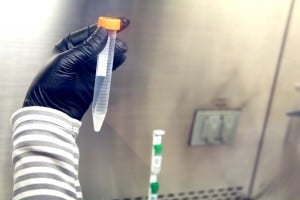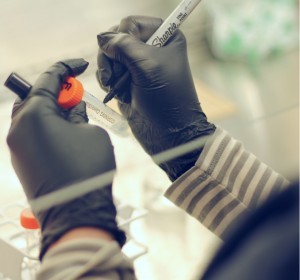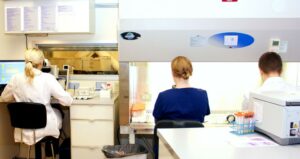Donor Sperm Quality: The little cells that make a big difference
Written by Charles Muller, PhD HCLD
Charles Muller, PhD HCLD is Laboratory Director of Male Fertility Lab at the University of Washington and a key member of the Advisory Board for Seattle Sperm Bank. His research is in fertilization, male reproduction, and prostatitis.
Customers focus on the attributes of the donor they select, but the quality of the donor’s sperm cells are equally, if not more, important. Every man may have different quality sperm, due to natural variation. At Seattle Sperm Bank, we do everything we can to be certain that our processes deliver the highest quality sperm cells at the time of use.
Sperm cells are fragile, susceptible to prolonged exposure to air, to chemicals in air and solutions, and to chemicals leached from containers. That’s why we only use solutions (‘media’) and containers that have been tested for their ability to support fertilization and sperm survival. It is why we control the environment during sample processing, run procedure quality checks, and ask for feedback on the outcomes of use of the sperm.

 Sperm cells that are processed for Intra-Uterine Insemination (IUI) prior to freezing undergo additional challenges but the result is a convenient product that has only highly purified, highest quality sperm cells. Sperm cells must be separated out of semen, since semen contains undesirable natural compounds (such as prostaglandins that would cause very painful uterine cramps), poor quality sperm cells, and contaminants (such as white blood cells, bacteria and broken-down cells). These compounds and contaminants would naturally be eliminated when sperm swim through the cervical mucus into the uterus. Thus, an unpurified sperm sample is suitable for vaginal or cervical insemination (“ICI”), but not for IUI. However, some cryobanks simply centrifuge the semen to collect most of the sperm for freezing and offer these preparations as “IUI Ready”. Those preparations include the poor quality sperm and contaminating cells. A microscopic examination of the thawed specimen can reveal this.
Sperm cells that are processed for Intra-Uterine Insemination (IUI) prior to freezing undergo additional challenges but the result is a convenient product that has only highly purified, highest quality sperm cells. Sperm cells must be separated out of semen, since semen contains undesirable natural compounds (such as prostaglandins that would cause very painful uterine cramps), poor quality sperm cells, and contaminants (such as white blood cells, bacteria and broken-down cells). These compounds and contaminants would naturally be eliminated when sperm swim through the cervical mucus into the uterus. Thus, an unpurified sperm sample is suitable for vaginal or cervical insemination (“ICI”), but not for IUI. However, some cryobanks simply centrifuge the semen to collect most of the sperm for freezing and offer these preparations as “IUI Ready”. Those preparations include the poor quality sperm and contaminating cells. A microscopic examination of the thawed specimen can reveal this.


